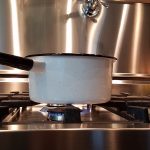
Are you tired of chilly evenings spent huddled under blankets? Do you dream of a cozy home, warm and inviting even on the coldest nights? If so, it may be time to consider multi fuel stove installation.
A multi fuel stove is a versatile heating appliance that can burn different types of fuels, such as wood, coal, or peat. This flexibility allows you to choose the fuel that suits your needs and budget. Whether you prefer the natural warmth and crackling sounds of wood or the long-lasting heat provided by coal, a multi fuel stove can accommodate your preferences.
One of the first steps in multi fuel stove installation is finding the perfect location for it in your home. Consider factors such as proximity to a chimney or flue, as well as the stove’s distance from combustible materials. Safety is paramount when it comes to heating appliances, so be sure to consult with a professional if you have any doubts.
Once the ideal location has been determined, it’s time to prepare the area for multi fuel stove installation. This involves creating a hearth or base upon which the stove will rest. The materials used for the hearth should be non-combustible, such as stone, brick, or tile. A professional installer can advise you on the specific requirements for your stove and provide guidance on achieving a safe and sturdy foundation.
After the base is in place, the next step in multi fuel stove installation is connecting the stove to the chimney or flue. This allows for the safe disposal of smoke and gases produced during combustion. It is crucial to ensure that the connection is secure and airtight to prevent the escape of harmful fumes into your living space.
When the stove is properly connected, it’s time to test and adjust it for optimal performance. This includes checking the airflow, adjusting the damper, and ensuring that the stove is properly sealed. A well-tuned multi fuel stove will burn efficiently, providing maximum heat output while minimizing fuel consumption.
Once the installation is complete, it is essential to maintain your multi fuel stove to ensure its longevity and safety. Regular cleaning and inspections are necessary to remove creosote buildup, which can pose a fire hazard. Additionally, inspect the stove for any signs of wear and tear, such as damaged gaskets or cracked glass, and address these issues promptly.
Efficiency is a key advantage of multi fuel stoves. Unlike traditional open fireplaces, these stoves are designed to maximize heat output and minimize wasted energy. This means you can enjoy a warm and cozy home while also reducing your carbon footprint.
Multi fuel stove installation is a fantastic way to enhance the comfort and efficiency of your home’s heating system. By choosing the right location, laying a sturdy foundation, and connecting the stove properly, you can create a warm and inviting atmosphere all year round. Remember to prioritize safety, regular maintenance, and proper fuel selection to ensure the best performance from your multi fuel stove. Embrace the warmth and cosiness that this versatile heating appliance brings into your life.


